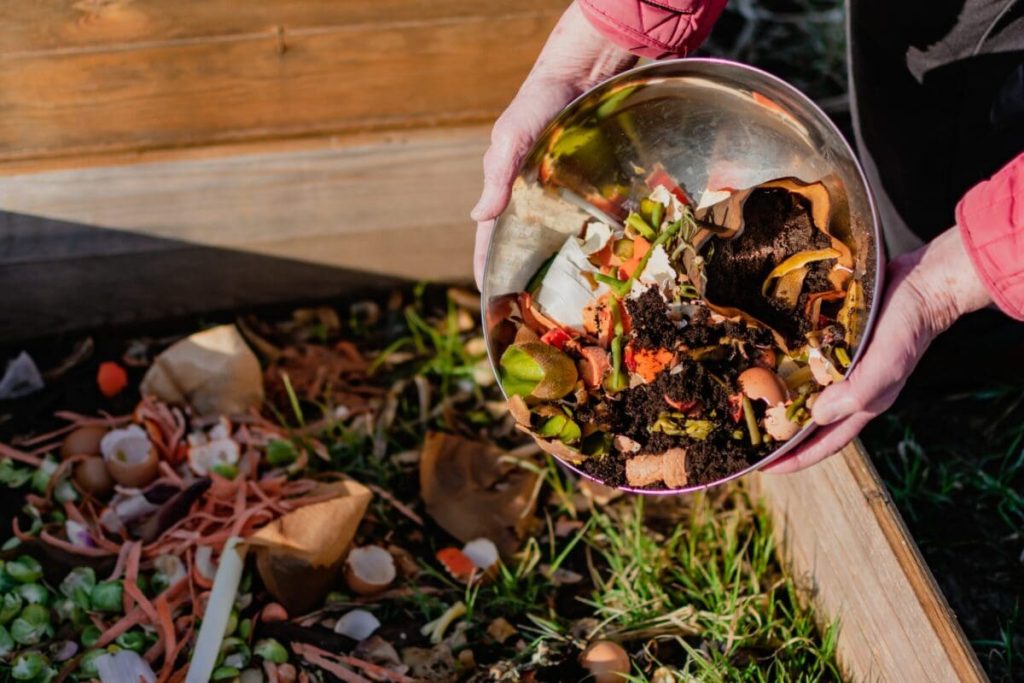
The environmental challenges the world is facing can seem so daunting and complex that many people feel they do not have any power to make an impact. Through composting, however, nearly anyone can begin to reduce waste and lower their own carbon footprint, thus allowing them to contribute to the fight against climate change.
Introduction: The Magic of Composting for Beginners
Composting is defined by the National Resources Defense Council as a natural process that involves recycling organic matter and taking advantage of the natural decomposition process to create valuable fertilizer. Composting not only provides a sustainable way to reduce waste in your household, but it can also gift you with some of the most potent and effective fertilizer for your garden.
Getting Started: Composting for Beginners Essentials
General composting is simpler than you might think. According to National Geographic, these are the essentials for learning how to make compost at home:
Choosing the Right Compost Bin
Before you can start composting food waste, you need to purchase or build a compost bin. There are several types of compost bins available — including stationary composters, tumblers, and worm bins. Stationary compost bins are the most common and affordable type and typically recommended for beginners. However, tumblers are easier to use, and worm compost bins may work a bit faster. You should evaluate your space and budget before deciding on the right bin for your composting needs.
Gathering Your Composting Materials
You must mix two types of materials to begin composting: green materials and brown materials. Greens are nitrogen-rich materials, while browns are carbon-rich materials — and you need the correct balance in order to transform your food waste into fertile soil.
Materials suitable for composting include:
- Brown materials (such as twigs, wood chips, shredded paper, and cardboard)
- Green materials (such as grass clippings, kitchen scraps, and coffee grounds)
Although plenty of food and yard waste can be composted, you should avoid adding meat, fish, dairy, and any food waste that is high in grease or oil.
Building Your Compost Pile: How to Make Compost at Home
Wondering how to make compost at home? Below are some basic steps for starters:
1. Layering Your Compost
Your compost pile will consist of layers; think of it like making a lasagna. You need to strike the right balance between browns and greens in order to effectively compost, with the Sierra Club recommending a six-inch layer of browns topped with a two-to-four-inch layer of greens. You also need to add moisture and air for optimal decomposition.
2. Turning Your Compost
Turn your compost pile every two weeks to ensure the compost has enough air and moisture. Proper aeration is necessary for a compost pile to get the oxygen it needs to effectively decompose.
3. Monitoring Your Compost
Regular monitoring is crucial to your success as a beginner at composting. You should check the temperature of your pile regularly, with National Geographic noting that temperatures between 140 and 160 degrees Fahrenheit are optimal for large compost piles. Worm bins may be quite a bit cooler. In addition, you should verify that your compost pile has enough moisture. If it is giving off a bad smell, add more brown material to improve aeration.
Maintaining Your Compost: Nurturing Nature’s Nutrient Cycle
You can maintain your compost for many years by:
Adding Compost Activators (Optional)
Compost activators can accelerate your compost production. Natural boosters include coffee grounds, eggshells, and alfalfa meal. Compost activators should be evenly distributed over the top layer of your compost pile.
Managing Moisture Levels
Maintaining proper moisture levels in your compost pile is essential to creating nutrient-rich compost in a timely manner. According to Planet Natural, if your compost pile is not hot enough, it may need more moisture. If there is too much moisture, your pile will feel slimy and have a foul odor. During wet seasons, you may need to add more brown material to soak up the moisture. In dry seasons, you might have to water your compost pile to manage its moisture levels.
Troubleshooting Common Problems
These are some common problems with composting and quick tips for troubleshooting them:
- Not enough heat – Add moisture and cover your pile.
- Foul odors – Add brown materials to soak up excess moisture.
- Slow decomposition – Add activators (like eggshells or coffee grounds) to your pile.
Harvesting and Using Your Compost: Reap the Rewards
Depending on the size of your compost pile, you may have ready-made fertilizer within a few weeks or a few months. Here’s everything you need to know about harvesting and using your compost:
When Is Your Compost Ready?
Your compost is ready when it is dark and crumbly and emanates an earthy smell. It can take anywhere from four weeks to one year to create compost, according to the NRDC.
How to Use Your Compost
You can use your compost in your own yard, with many people finding that compost fertilizer is one of the most effective forms of enrichment for their gardens. Compost can be added to garden soil, used to create a potting mix for plants, or added as a dressing layer for lawns and flower beds.
Composting Beyond the Basics: Exploring Different Methods
Once you get the hang of composting for beginners, you might want to explore more advanced composting methods:
Vermicomposting (Worm Composting)
Vermicomposting, more commonly referred to as worm composting, is a specialized form of composting that relies on a heavier concentration of worms to break down organic waste. While worm composting is a faster way to make compost, it can be a little trickier. It relies heavily on feeding worms your food scraps, and they can sometimes be picky eaters. You may need to chop food waste like tough rinds into smaller particles to encourage the worms to eat the scraps and cast out their waste, and too much citrus peel can make the environment too acidic for worms to thrive.
Bokashi Composting
With origins in Japan, bokashi composting is a quick method that relies on a small indoor composting system. According to The Spruce, it requires combining your kitchen scraps with layers of wheat bran or germ to produce compost fertilizer. As opposed to traditional composting, for which oxygen integration is a key element, bokashi calls for cutting off oxygen. You may also contribute meat and dairy products to these piles.
Composting — Your Contribution to a Sustainable Future
You may be a composting beginner, but you can still have a surprising impact on both your local environment and the world at large. Composting helps reduce waste and lower carbon emissions, and even small efforts can make a big difference.
As your passion for protecting and conserving the local environment grows, you may want to consider furthering your education with an environmental degree. Explore how Unity Environmental University – Distance Education’s BS in Environmental Studies can empower you to further your efforts in reducing environmental impact and making a difference at a larger scale. Get in touch to learn more.
Sources
https://www.epa.gov/sustainable-management-food/composting
https://www.nrdc.org/stories/composting-101
https://www.nationalgeographic.com/lifestyle/article/how-to-compost-at-home
https://learn.eartheasy.com/guides/how-to-choose-the-right-composter/
https://www.sierraclub.org/sierra/2012-6-november-december/green-life/composting-101-hooray-black-brown-and-green
https://www.planetnatural.com/moisture-in-compost/
https://www.gardeners.com/how-to/compost-troubleshooting/5155.html
https://www.thespruce.com/basics-of-bokashi-composting-2539742
https://foodprint.org/eating-sustainably/composting-and-food-waste/vermicomposting-101/



